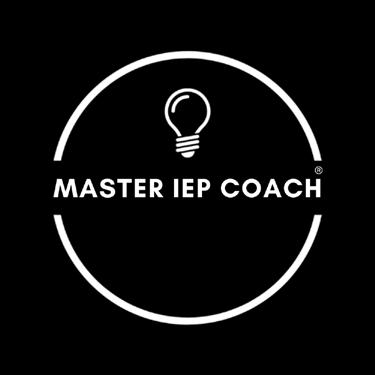Developed by Catherine Whitcher, M. Ed


Time Saving IEP Guide for Teachers and Parents
TIMER® | IEP RESOURCE
TIME
GUIDE

Table Of Contents 3 | About Catherine Whitcher 4 | About Time Timer® 5 | Introduction 6 | Time Management Strategies 6 | #1 – Blocking Time 7 | #2 – Know the WHY 8 | #3 – Build Parent Input 9 | #4 – Build Self Advocacy 10 | #5 – Discuss the Draft 12 | Next Steps 14 | Bonus Visual Timer Strategies 14 | For the Classroom 15 | At Home 16 | Visual Timers Written into the IEP 17 | Example Teacher Letter 18 | Example Parent Letter
Catherine Whitcher, MEd, founder and CEO of Master IEP Coach®, experienced the struggles of the Special Education system both as a certified teacher and as a sister to a wonderful man with Down syndrome. For the past 25 years she has been creating nationwide change in special education by assisting parents and teachers in developing IEPs that work in the real world. Catherine currently leads the largest independent organization nationwide of parents and teachers working together to build better special education outcomes for the real world. She’s an expert in conflict resolution and leadership at the IEP table while always keeping the focus on preparing every child for further education, employment, and independent living.
Learn More:
www.catherinewhitcher.com

www.masteriepcoach.com


Reach Out Directly at:
catherine@catherinewhitcher.com
IEP RESOURCE | 3
Meet Catherine
Jan Rogers

About Time Timer®
Time Timer® visual timers are innovative, simple time management tools designed to “show” the passage of time through the use of a patented disk. As time elapses, the colored disk disappears. Unlike traditional timers that fail to make the abstract concept of time concrete, award-winning Time Timer products visually depict “time remaining,” providing stress-free time management at work, school and home for all ages and abilities.
How Much Longer?
Time Timer® makes the only visual timers that reinforce the movement of an analog clock and how it displays time remaining. Our visual timers make the passage of time visible for anyone who needs to focus or struggles to visualize what 10 or 20 minutes really means.
The numbers are placed counterclockwise to accommodate the countdown function of a clock. The red disk moves to highlight the numbers showing exactly how much time is left. This setup has been proven to help anyone trying to focus on a particular activity for a set period of time.
Research Proven
T ime Timer® products are proven tools to increase self-regulation. A recent study conducted by the Department of Exceptional Student Education at Florida Atlantic University found that children ages 2-4 years old showed a significant increase in self-regulation skills when a Time Timer® visual timer was used to facilitate their activity. Read more about this study and other research done on the effectiveness of Time Timer® products at timetimer.com/research.
4 | TIME TIMER® | GUIDE IEP RESOURCE
12 6 93 1 11 5 7 10 2 84 60 Minutes Left 12 6 93 1 11 5 7 10 2 84 45 Minutes Left 12 6 93 1 11 5 7 10 2 84 30 Minutes Left 12 6 93 1 11 5 7 10 2 84 15 Minutes Left 12 6 93 1 11 5 7 10 2 84 0 Minutes Left
Inventor & Founder of Time Timer
Jan invented the first visual timer 30 years ago to help her young daughter grasp the concept of time.
Special Education Time Management Strategies for Everyone Including Students!
BEFORE WE GET STARTED -
We all know how precious time is, and as educators and parents, we juggle countless responsibilities every day. Whether we're in the classroom or at home, finding those extra minutes can sometimes feel impossible.
For the past 25 years, I’ve been helping parents and teachers build IEPs that work in the real world. I grew up in the disability community (my brother has Down syndrome), I’m a former classroom teacher, and I’m a parent… which means, I’ve always been searching for more hours in the day!
Once I nailed down time management strategies that worked for me, I started implementing those strategies in every aspect of my life from parenting to managing my daily to-do list. This also included making time management a priority skill within IEPs for students who were struggling to get through their day smoothly.

It’s amazing how the right time management strategies can make our days a little easier and more efficient. But, we can’t make time management happen with wishful thinking. We must get the right systems, tools, and supports in place for the magic of time management to work.
I’m going to walk you through 5 Time Management strategies that you can use to build better IEPs and with consistency, I promise you, these strategies work — even on the toughest days.
Now grab an IEP and your Time Timer®, it’s time to dig into IEPs in a whole new way!
With Hope & Determination Always, Catherine
Whitcher, M.Ed
Master IEP Coach®, Founder & CEO
IEP RESOURCE | 5 TIME TIMER® | GUIDE
Time Management Strategy #1
Blocking Time
Before we even begin opening up the IEP you need to write or review, it’s important for you to make a commitment to yourself that you will stick to your plan for “working on IEPs”. Do you need one hour this week to work on your student’s or child’s IEP? Block it on your calendar. Protect that hour and then put away the IEP at the end of the hour.
Time management isn’t always about finding the time, it’s often about honoring your time once you’ve dedicated it to a task. By starting and stopping a task at specific times, you can avoid both overwhelm and overthinking.
Action Step: Set your Time Timer® visual timer for 15 minutes and block time on your calendar to work on IEP paperwork. Whether you use a digital calendar or a paper planner, blocking time at regular intervals will help your brain rest knowing that you have a plan to get everything done for your next IEP meeting!
Parents - One hour per month is a great rhythm for double-checking your child’s IEP.
Teachers - Your time block is most 2+ hours per week.
Students - Planning a student’s day, week, and month with time blocks, including clear start and end times is perfect. Getting students involved in their own schedule time-blocking is one of the best ways easily incorporate self-advocacy into independent living skills.
*When the timer stops, move on to your next task. You will most likely need to do this step once every month to prepare for the upcoming months.

6 | TIME TIMER® | GUIDE IEP RESOURCE
Time Management Strategy #2
Know the WHY
When crafting an IEP, one of the most effective time-saving strategies is to keep a sharp focus on the WHY behind it. Per IDEA law, the ultimate goal of an IEP is to prepare a child for a successful future, including further education, employment, and independent living.
Instead of attempting to create a catch-all IEP that addresses every possible concern, concentrate on prioritizing the critical skills and goals that align with the child's long-term future. By focusing on these essential skills, teachers and parents can streamline IEP development, allowing for more efficient use of time and resources.
Emphasizing the WHY empowers us to make well-informed decisions and tailor the IEP to meet the specific needs of the child, ensuring that every step taken is purposeful and geared towards creating a future filled with opportunities.
Action Step: Set your timer for 15 minutes and look through the current IEP goals. Ask yourself, “Will this IEP goal be important 5 years from now?”. If the answer is YES, keep the goal for next year. If the answer is NO, flag that goal to discuss it with IEP team members to decide together if the goal should continue to be in the IEP.
TIP: Students being able to manage their time effectively is definitely a skill needed for the future! How will you incorporate time management into IEP goals, services, or supports?

IEP RESOURCE | 7 TIME TIMER® | GUIDE
Time Management Strategy #3
Build Parent Input
Incorporating parent input into the IEP development process is not only a valuable practice, but also a powerful time-saving strategy. Parents possess a wealth of knowledge about their child's strengths, challenges, and unique qualities that can significantly contribute to crafting a comprehensive and effective IEP.
By actively involving parents in the process, educators can eliminate guesswork and help streamline decision-making. Understanding a child's home environment, learning preferences, and individualized supports outside of the classroom ensures that the IEP is customized to suit their specific needs.

Collaboration with parents fosters a shared sense of responsibility, promoting a united front in nurturing the child's growth and progress. By embracing this collaborative approach, teachers and parents can work together efficiently, saving time while creating an IEP that serves as a powerful roadmap for the child's educational journey.
Action Step: Set your timer for 15 minutes and dedicate this time to building the “Parent Educational Concerns” section of the IEP. Depending on what IEP writing program your district requires, the section might have a different title, but EVERY IEP has a section for a parent’s voice - guaranteed! Look through the current IEP document and find what was shared from the parent perspective at the last meeting.
8 | TIME TIMER® | GUIDE IEP RESOURCE
Parents - As part of your IEP prep, make sure to submit a letter with your parent input one week prior to your IEP meeting discussing your concerns and desires for your child in the areas of academics, relationships, independent living, and any other areas of need.
Teachers - Create a parent-friendly questionnaire to help parents give IEP input before you write the IEP and don’t hesitate to get creative. For example, asking a parent about what is stressful during family outings (Eloping? Loud noises? Waiting in line?) is a great way to build an IEP partnership to develop skills that are useful at both home and school!
Time Management Strategy #4 Build Self Advocacy
Student self-advocacy is a pivotal aspect of the IEP process, and its importance cannot be overstated. When students actively engage and advocate for their needs, goals, and preferences, it streamlines the entire IEP development and implementation process.
By expressing themselves directly, students provide valuable insights into their learning styles, challenges, and aspirations, reducing the need for educators and parents to make assumptions or guesswork. That’s definitely a time-saver!

Self-advocacy instills a sense of responsibility and ownership in the student, motivating them to take an active role in their education. The result is less time spent convincing a student they need to learn something that adults have decided for them and more time working together to meet a mutual goal.
Action Step: Set a timer for 15 minutes and brainstorm different ways your child or students can become more active in their IEP.
IEP RESOURCE | 9 TIME TIMER® | GUIDE
Here are some ideas to get you started!
• Creating Visual Presentations: Encourage students to prepare visual presentations that showcase their progress, achievements, and goals. This could include using slides, artwork, or videos to illustrate their journey, strengths, and areas they would like to improve.
• Filling Out Surveys: Provide students with surveys or questionnaires to gather their thoughts and feelings about their educational experience. These surveys can cover topics such as preferred learning styles, challenges faced, and aspirations for the future.

• Conducting an Interview: Offer students the opportunity to have a one-on-one conversation with teachers and parents (separately) about their educational journey. This interviewstyle interaction allows the student to share their perspectives, concerns, and suggestions in a more relaxed setting.
• Setting Personal Goals: Encourage students to actively set their own academic and personal goals for the upcoming period. By involving them in the goal-setting process, they become more invested in their progress and can take ownership of their educational path.
Time Management Strategy #5
Discuss the Draft
Sharing a draft IEP between all IEP team members is a step taken by many districts, but don’t feel left out if your district isn’t doing this yet. You can be the changemaker by starting to make this a habit in your IEP prep.
By preparing a draft before the official meeting, educators, parents, and other team members can review the proposed goals, accommodations, and strategies ahead of time.
10 | TIME TIMER® | GUIDE IEP RESOURCE
(Cont.)
This enables everyone to come to the meeting well-prepared with constructive feedback and suggestions, making the collaborative discussion more focused and productive.
Additionally, sharing pieces of the draft with the student allows them to review and offer their input, promoting self-advocacy and active participation.
Action Step: Set your timer for 15 minutes and take action to make sure that you are taking full advantage of the benefits of a complete “draft IEP process”.
Parents - If you are not receiving a draft IEP prior to your meeting, use these 15 minutes to draft an email asking for a draft IEP prior to the meeting and be specific about any areas that you definitely want to see. Such as proposed IEP goals and the most recent data used to write goals.
Teachers - Use these 15 minutes to gather the pieces of information you need to share with a family prior to the IEP meeting. Not all pieces are sent home, as many pieces of the IEP must be completed at the meeting, as a team. Developing a system for sending home a draft IEP only takes a few minutes, but can save hours of stress, plus reduce conflict during IEP meetings.
Students - Children of all ages can benefit from knowing that parents and teachers are working together to help them be successful in school. Parents and teachers should collaborate on what pieces of the IEP should be shared prior to a meeting, who will do the sharing, and how the student may provide feedback on their upcoming goals, supports, and services.
NEXT STEPS
Creating your new time-management routines for your IEP process is not an easy task, but it is possible. Never forget that visual timers are not just for children. With all the distractions and responsibilities you carry as a parent or educator, visual timers might just be the missing piece to you finding more minutes in your day!

IEP RESOURCE | 11 TIME TIMER® | GUIDE
Now, it’s time to make a decisionWhich 2 or 3 ideas from the previous pages will you be integrating into your IEP prep routines?

1 2 3
Notes:
12 | TIME TIMER® | GUIDE IEP RESOURCE
If you have any questions about the strategies mentioned in this guide, do not hesitate to reach out directly to Catherine Whitcher, M.Ed, founder of Master IEP Coach® and ask for more IEP help at: www.iepmentor.com
Time Timer believes in creating products that truly help people of all ages and abilities to conquer time – in the classroom, in the home, and in the office. While time can be a challenge for everyone, we aim to provide intuitive and innovative solutions that make a real difference.

IEP RESOURCE | 13 TIME TIMER® | GUIDE
”
“Inclusion is not about making a child conform to the set standards or blend in with their peers. It’s about embracing their individuality and ensuring their success in all areas of life.
– Catherine Whitcher, M.Ed
For the Classroom
Bonus Time Timer® Visual Timer Strategies
1
INDIVIDUAL
WORK SESSIONS:
Include the use of a visual timer during individual work sessions to help the student pace themselves and stay on track with assignments or tasks.

2
TEST-TAKING:
Allow the student to use a visual timer during tests and assessments to manage their time effectively and reduce test-related stress.
CLASS-TO-CLASS TRANSITION PERIODS:
Use visual timers during transition periods between activities to help the student prepare mentally for the upcoming task or change.
BREAKS AND RELAXATION:
Incorporate visual timers during scheduled breaks to ensure that the student takes the appropriate amount of time for relaxation or sensory regulation.
GROUP
ACTIVITIES:
Implement visual timers for group activities to help the student allocate time appropriately and participate actively in collaborative tasks.
PROJECT PLANNING:
Teach the student to use visual timers while planning and working on longer-term projects to manage their time effectively and meet deadlines.

INSIDE CLASSROOM TRANSITIONS:
Use visual timers during classroom transitions to help the student prepare mentally and smoothly switch gears.
14 | TIME TIMER® | GUIDE IEP RESOURCE
3 4 6 7 5
At Home
Bonus Time Timer® Visual Timer Strategies
HOMEWORK OR THERAPY SESSIONS:
Set a visual timer for designated periods to help your child know exactly what they need to be working on at home or at therapy and for how long.
SCREEN TIME LIMITS:
Use a visual timer to establish and communicate limits for recreational screen time, ensuring a healthy balance with other activities.
CHORES AND TASKS:
Encourage your child to complete chores or tasks within a specific timeframe by using a visual timer to provide a clear sense of urgency.
BRUSHING TEETH:
Set a visual timer for the recommended duration (e.g., two minutes) to ensure your child brushes their teeth thoroughly.

COOKING AND BAKING:
Utilize a visual timer to keep track of cooking or baking durations, helping your child understand when everything will be ready to eat. Yum!

BEDTIME ROUTINE
Set visual timers for each step of the bedtime routine (e.g., getting ready, reading time) to establish a consistent and manageable schedule.
IEP RESOURCE | 15 TIME TIMER® | GUIDE 1 2
3 4 6 5
Visual Timers Written into the IEP
Bonus Time Timer® Visual Timer Strategies
As parents and teachers, you are investing your time, money, and heart into writing the best IEPs possible for your child and/or students.
Having visual timers explicitly written into an IEP can provide many benefits, including - year-to-year consistency for the child and having the district more easily fund visual timers as part of providing an appropriate education.

Did you know visual timers can be considered Assistive Technology? Every IEP has a box that can be checked for Assistive Technology (AT). If your child or student needs visual timers for success, checking this box "YES" and defining visual timers as part of the AT plan is a great way to get started in visual timers becoming a consistent support. Of course, you can always have visual timers added into IEP goals or the section for "additional supports needed", too. The most important thing is to make sure… if visual timers are critical for a child’s success, they are clearly written in the IEP. Once a visual timer is written into an IEP, the district must provide the tool at no cost to parents or teachers.
But, even if a visual timer is not written into an IEP (yet!), you can ask your school district to support your child or students with Time Timer® products.
16 | TIME TIMER® | GUIDE IEP RESOURCE
”
“ With an IEP, you can always pick more than one thing, but you do have to prioritize AND you can always come back to the table for more, if needed.
– Catherine Whitcher, M.Ed
Example Teacher Letter
Dear Principal/PTA/Special Education Director,
As a dedicated special education teacher at [School Name], I am writing to request the allocation of resources that I am confident will significantly enhance the learning experience and support for our students with diverse learning needs. Specifically, I am seeking the district's support in acquiring 10 (ten) Time Timer® visual timers for my classroom, which I strongly believe will be valuable visual supports for our students’ academic and emotional growth.
Time Timer® visual timers are a proven and effective tool for assisting students with managing their time and improving their overall focus and self-regulation. As a special education teacher, I have witnessed firsthand the positive impact visual timers can have on our students' learning and behavior. The clear visual representation of time passing helps students understand the concept of time better, which is particularly beneficial for those who struggle with time management and transitions.
The Time Timer® visual timers will be instrumental in creating structured and predictable routines, providing students with a sense of security and reducing anxiety associated with time constraints. By visually breaking down tasks into manageable segments, students can better grasp the expectations and stay on task throughout various activities. Additionally, these timers will foster a more inclusive learning environment, accommodating the diverse needs of our students and promoting equal opportunities for success.
I have carefully researched and selected Time Timer® visual timers as a trusted and cost-effective solution to support our students' unique requirements. The timers are user-friendly and versatile, making them suitable for students of different ages and abilities. Moreover, they align perfectly with our school's commitment to providing exceptional support to students with diverse learning needs.
I understand the financial constraints faced by our district, but I genuinely believe that investing in these Time Timer® visual timers is an investment in the future of our students. As an educator, I am committed to providing the best possible learning experience for each student, and these visual supports will undoubtedly contribute significantly to achieving that goal.
I kindly request your support in advocating for the allocation of funds to acquire 10 (ten) Time Timer® visual timers for my classroom.
Thank you for your time and consideration of my request. I am eager to discuss this matter further and provide any additional information or testimonials from other educators who have found success with Time Timer® visual timers in their classrooms.
Together, let us continue to create a supportive and nurturing environment where all our students can thrive academically and emotionally.
Sincerely,
[Your Name]
[Your Title/Position]
[Contact Information: Email and Phone Number]
IEP RESOURCE | 17 TIME TIMER® | GUIDE
Example Parent Letter
Dear Principal/PTA/Special Education Director,
As a parent of a child attending [School Name], I am writing to express my sincere gratitude for the education and support our school provides to students with diverse learning needs. I appreciate the dedication of the special education department to ensure that every child receives an inclusive and nurturing learning experience.
I am reaching out to respectfully request your consideration and support for a crucial addition to my child's classroom—a resource that I believe will significantly benefit not only my child but also other students with similar needs. I have recently learned about the effectiveness of Time Timer® visual timers, and I firmly believe that incorporating these visual supports in the classroom can make a positive difference in my child's educational journey.
Time Timer® visual timers are well-known for their ability to help children manage their time effectively and improve focus and self-regulation. As a parent, I have seen the challenges my child faces in understanding the passage of time and staying on task during different activities. Time Timer® visual timer's clear visual representation of time passing would be immensely helpful in creating a structured and predictable environment, easing my child's transitions and reducing anxiety associated with time constraints.
Again, I appreciate the efforts of the teachers and staff in supporting my child's learning and well-being. By having Time Timer® visual timers in the classroom, I am confident that educators can offer a more inclusive and individualized learning experience, catering to the unique needs of students like my child. The timers' versatility and user-friendly nature make them suitable for students of varying ages and abilities, which aligns perfectly with the diverse community we have at [School Name].
I understand the challenges the school district faces in managing its resources, but I genuinely believe that investing in Time Timer® visual timers is a worthy investment in our children's future. As a parent, my utmost priority is to provide the best possible learning environment for my child. By supporting the integration of Time Timer® products, we can create a more inclusive classroom that fosters independent learning and empowers children like mine to thrive academically and emotionally.
I kindly request your support in advocating for the allocation of funds to provide Time Timer® visual timers in my child's classroom. If needed, I am more than willing to collaborate with the school administration in exploring possible funding options or engaging in fundraising efforts.
I am hopeful that, together, we can continue to make [School Name] a place where every child feels supported, included, and encouraged to reach their full potential.
Sincerely, [Your Name]
18 | TIME TIMER® | GUIDE IEP RESOURCE

IEP RESOURCE | 19 TIME TIMER® | GUIDE
Notes:

www.timetimer.com • support@timetimer.com • (877) 771-TIME CR23803 202308 ©2023 Time Timer LLC and Catherine Whitcher of Master IEP Coach® Content in this document may be reproduced without permission, with proper credit, for educational purposes only. FIND MORE FREE EDUCATIONAL GUIDES AT: www.timetimer.com/freeresources FIND MORE FREE IEP RESOURCES AT: www.masteriepcoach.com Time Saving IEP Guide for Teachers and Parents Developed by Catherine Whitcher, M. Ed TIME TIMER® | IEP RESOURCE GUIDE +
























